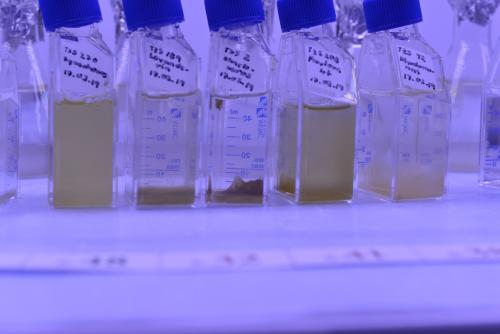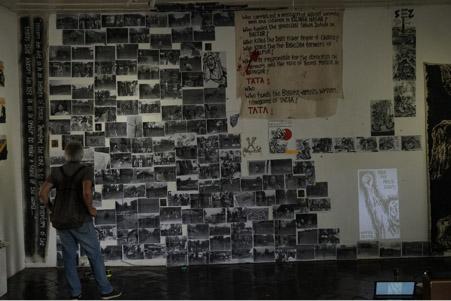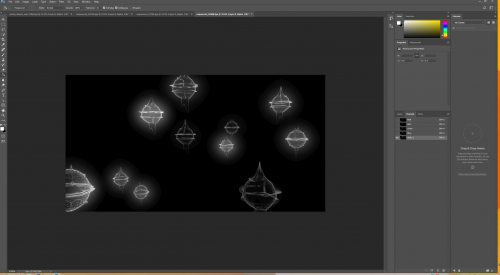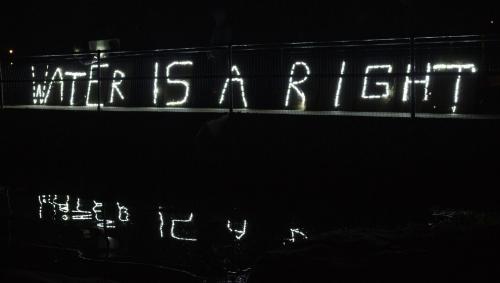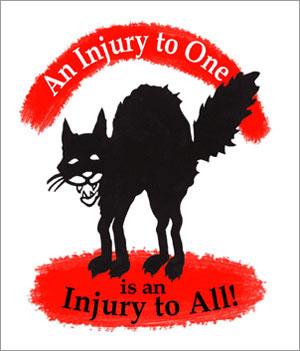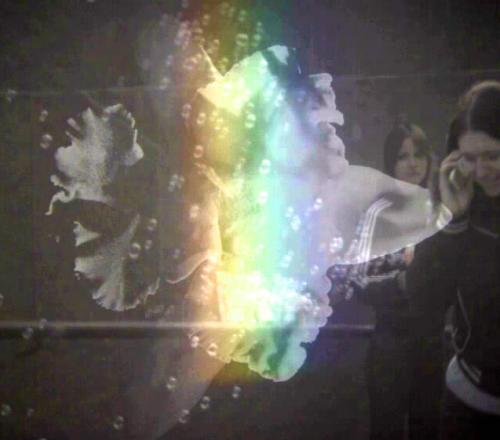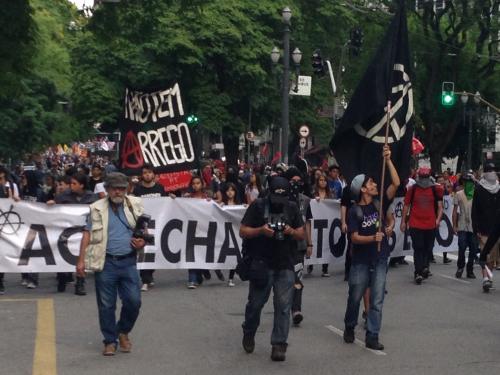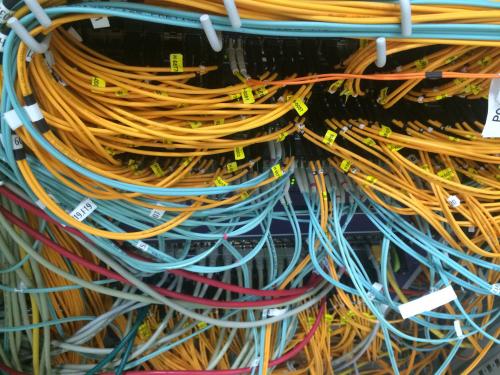SMW: Reading about Blackwash and the movement’s development between 2008-2014, which Ncebakazi Manzi says was structurally and developmentally influenced by toxic masculinity, has not only made me shocked but also rever- berates what I read about the rising violence within communities in many places. If women and Black consciousness movements are gradually destroyed and destabilized from within, it surely presents an “escalation of violence against women” today as Silvia Federici[1] calls it but also makes us wonder how we can strengthen structures not to make them more “immune” against this type of violence but at least as a sort of resilience or preparedness that can grow out of having known or experienced violence. Sharing stories and connecting similar patterns in order to not give in to the perpetuation of its ongoing repetition. Could you describe the beginning of Blackwash from your perspective and how this experience also contributed to challenging ideas around the role of women in anti-colonial struggles?
PN: Before answering, I found it necessary to re-read Ncebakazi’s text[2] because when I first read it, it was all too emotional for me, so I wanted to read it with fresh eyes. To answer your first question, I will start with describing some facts and the beginning of Blackwash in the following way:
Blackwash happened a good decade after South Africa’s first democratic dispensation, or what we later popularized as the post-1994 negotiated settlement. For context, it was started by what I will refer to as the “‘80s babies,” meaning that we were children who were born during and lived under a state of emergency of the 1980s and apartheid—the teenagers who could still remember white domination but were also the first generations to “escape” Bantu education that was developed by the state for Black children. Blackwash was started by these people who were amongst the first generations to attend previously whites-only schools and experienced the difficulties that this posed for Black children who were basically integrated in white spaces and who experienced the subtle and sometimes overt violence to their personhood. It was started by the people who would get punished for speaking an African language inside school grounds (we went to schools that prioritized speaking and teaching in English), the ones who had to straighten their hair because our natural hair was seen as unruly, the ones who were disciplined through statements such as “go back to the township” if they found expression of themselves in a way that did not resonate with the spaces we found ourselves in. These were the people who had to adapt to whiteness and the markers of success were intertwined with speaking English with a twang, and where success was essentially about how far removed you had to be from Blackness, so to say. This is significant in so far as we understood that we were groomed to be alienated from ourselves. We then moved into Eurocentric university spaces that did the same in terms of the curriculum we were taught and the heroes that we were elevated. This of course was not working in isolation to a history of a society that had long used education, the media, religion, and other aspects of social life as essential instruments in consolidating colonialism and, in turn, apartheid.
Blackwash was started by products of the non-racialism doctrine and of certain values that were legitimized by the ruling party, The African National Congress (ANC), from the 1990s onward. People who from a young age are taught that we live in a much celebrated rainbow nation, people who were fed on a stable diet of the belief that South Africa has changed and we were thus the lucky ones, the ones who should be grateful for the recently earned opportunities, people who with a little bit of hard work and individual strength to reconcile and put forth forgiveness could be anything they wished, that the shackles of apartheid were no longer an issue for them. Except the reality was that South Africa remained a place where the distribution of wealth remained unequal, where job opportunities and resources continued to favor white people—not only the older generations but the generations that were the same ages as us. Though much fanfare was made about the ridding of overt interpersonal racism (and that not completely), much of the structural racism remained intact and in fact thrived under the new dispensation. I am thinking here of the families and businesses that accumulated vast amounts of capital due to colonial conquest who continued to accumulate wealth and influence by painting themselves as part of the rainbow nation now.
Going back to the heroes that were elevated for us as role models, people like Nelson Mandela and Desmond Tutu who preached unity and forgiveness without justice, there was also the deliberate erasure of the heroes from the Pan-Africanist and Black Consciousness traditions. People who respectively had resisted an illegitimate system of white supremacy like Steve Biko and Robert Sobukwe. This was done by promoting the ANC as the only true liberation movement that had brought the much talked about freedoms we now experienced. And it must be said that those heroes predominantly wore the bodies of men, heterosexual ones at that. Women who resisted colonial rule and apartheid were presented to us as wives of great men or people who contributed through domesticity rather than full revolutionaries in their own right. The most popular stories we were told about women’s resistance was about the 1956s women’s march against the laws of carrying dompasses. The law made Black people have to carry identification passes in order to control the movement of Black people in urban areas. Most of the heroes we were told about in that march were either white women or affiliated to the ANC.
Lastly, and this comes up in Ncebakazi Manzi’s paper as well, by the time we establish Blackwash, South Africa is coming up fast as a protest capital of the world (probably second after Brazil). These protests, which are popularly known as service delivery protests, are directed at local government and the state in general because through the inequality people see the shape of how the government is failing to deliver houses, water systems, jobs, resourced hospitals, and other resources to communities across the country. Services that the ruling party (ANC-led) had promised people in their election campaigns. These protests are largely tolerated because they become ahistorical in nature, meaning that colonialism is no longer seen as the cause of the inequality. The theft of land for instance is hardly connected to housing struggles. In a sense, the protests become issue-based rather than resisting an all-encompassing structural normalization of racism in the society.
The ANC, at this point had also endorsed the policies of Black Economic Empowerment programs and affirmative action which had resulted in some individuals, mainly affiliated to the ANC, amassing wealth (such as Tokyo Sexwale who is mentioned as having bought himself an island in Ncebakazi’s paper) while a majority of the Black population remain poor.
Therefore, some of the factors mentioned above indirectly and directly contribute to us challenging ideas about the status quo. Our position as young, Black women meant that the ideals around Black Consciousness and Pan-Africanism found resonance in our current situations. Our lived experience as people who had moved in spaces (schools, jobs) where we had been confronted with whiteness, spaces that were not readily available to our grandmothers and perhaps even our mothers, led us to develop a sense that not all is well and that standing on the shoulders of those who had sacrificed for our being, those who came before us that perhaps we could do something about our collective struggle as Black people. Once we started questioning inequality, the rainbow nation myth and the domination of the ANC in liberation history, we also started questioning values such as the respectability politics that came in the form of how we saw which kinds of women were promoted as having fought struggles. This was significant in so far as we did not subscribe to those ideals of respectability.
We wore tight clothes, showed our boobs and thighs, we smoked cigarettes, we drank alcohol, we socialized with men in clubs, we laughed loud, and spoke even louder—and all manner of things that conflicted with ideas around a particular type of womanhood. This is the attitude we also installed in our movement work when we started Blackwash which is why we were not conflicted about swearing and using slogans like “Fuck the Rainbow Nation,” “Fuck Varsity (University),” “Fuck 16 Days of Activism,” etc. Because of the influence of Black Consciousness in our lives, we did not feel the need to pander to liberal white feminism, we were not going to align ourselves with white women in our path to resistance. We were also suspicious of individualism, and this influenced our need to work as a collective, for a collective struggle.
SMW: As an artist especially, I was impressed how creative and intervention-like the structure was able to grow in the beginning and how much criticality, in a practical sense, was involved in assessing the situation and the need for a new movement. It made me think of Denise Ferreira da Silva ́s text “Reading art as confrontation,” which is more appropriate in the context of Black female consciousness and actual implementation as you speak about.[3] Can you say a bit more about the backgrounds of the first group of women starting to organize and meet, plus the courage to voice the demand for change?
PN: I think that I have answered this through the above, but perhaps it is important to mention that three out of the four women were in one way or the other working in the media or studied journalism, so we were media savvy. This perhaps gave us the confidence to understand how to “sell” our message as well as some contacts or networks we could tap into to ensure that we are noticeable in media. Because we were an outgoing lot as well, we used our ability to navigate social spaces to introduce our ideas. We were not conventional in the sense of where we would start conversations. It was not uncommon to be debating with our peers about the status quo and trying to change perspectives in bars, parties, and late-night restaurants. In fact, some of our meetings would happen in informal spaces rather than boardrooms and conference halls. Though some of us came from religious family backgrounds, we had long abandoned Christianity as a great marker in our identities. In my case, my family attended a church that fused in African spirituality with Christianity and I suppose that made it easier to accept Pan-Africanism as a working model. Another one of the women also grew up in a family church that has a history of resisting land invasions by an oppressive government and whose people were massacred on account of this resistance. I think this influenced how far we could go with questioning and assessing our current situation.
We not only wanted a new movement but were committed to imagining a new kind of movement. We also had a deep love and respect for each other as friends which made us act in courageous ways even when we were scared. The unspoken rule was that, no matter the negative feedback, we have each other’s backs. For our very first radio interview as Blackwash, we were all physically present (some people were late for work as I remember) even though only one person would be speaking. We shared readings with each other and cultivated a culture of not only reading but thinking critically about what were read. I believe this translated into Blackwash.
On the development of toxic masculinity influencing the structure and way the organization mutated, I have no grand answers. Mainly because I can’t separate individual behavior from how our society is premised on toxic masculinity, which means this issue cannot be looked at as internal or unique to Black consciousness movements. The only thing I can say for sure is that these kinds of movements do get destabilized for the benefit of external structures. In Blackwash we often talked about a racism absent of white faces – which is not to say Black people are racist but rather racism can reproduce itself in the absence of white bodies but for the benefit of white bodies – and I believe the same can be said of patriarchy. Therefore, without destabilizing what bell hooks refers to as “the imperialist white supremacist capitalist patriarchy,”[4] Black conscious movements will not be “immune” against this kind of violence.
SMW: Reflecting on what you say but also on the text, the lines that struck me the most are where you mention that the structural violence and the structural racism stayed on even though they were appraised as different times. I cannot help but see patterns even if I don’t have any clue apart from what I read and sense in your words, and the way you put words to it, for example when you talk about the IDs that are specific like wearing a face recognition device. It is striking that the infrastructure is so obvious and yet it still persists through the very different agencies. At the same time, I see you are inventing a different infrastructure, and maybe not consciously, but it seems to me that this was where the energy at the beginning came from: the t-shirts with lines that created an awareness and worn on the people and bodies for example has a strong power and the way you came up with this idea is a huge thing. And if I imagine correctly, the important thing was the voice that addressed the structures from the people affected and not some abstract representation.
PN: Yes, I talked a lot about how structural racism remained because it is such a weird mental space to be in. We were in a time that offered us proof that the era some called the new South Africa is in fact the old South Africa with glitter.
The dompas (the ID) literally means “dumb pass.” It was key in controlling where Black people could live, what they could do, where they could shop, and in surveilling all their movements around the whole country. It literally legislated making Black people permanent children. “Coincidentally” this idea of Black people as children is then used to justify social control. So, on identity cards being similar to face recognition, that makes total sense to me because both can work as a way for surveillance and social control.
I hear you on the different infrastructure. I think we were intentional about some aspects of that. Like with the t-shirts. We had to think hard about alternative ways of both sourcing and selling the t-shirts. We could not go the traditional route because of our stances on capitalism for instance. We celebrated experimentation, doing things by ourselves. We embraced creativity and became far less restricted by censorship, even self-censorship. This attracted many creative artists and thinkers who helped define Blackwash. We were all mobile t-shirt vendors. One of the other fascinating things for me is how (unintended I think), through this we were making repairs, on ourselves: mental repairs and social repairs (cause for sure it was not economic repairs). A t-shirt sale became a sure route to a confessional of some sort. Racism that people felt was part of their workplace culture for example.
SMW: There are moments where you emphasize the individual take on Black female consciousness, at the same time you talk about the great power to connect. “We have each other’s backs”—is that a kind of established trust and skill? Is it a kind of move you can do between the collective and individual without noticing? Or maybe I struggle with putting that into words, but as a political action it transforms the individual experience into some bigger context of protest and alliance especially as we are speaking about a racialized world.
PN: When it comes to Black Consciousness, this idea of collective and the individual is something we probably talk about to death. This is because assumptions about the self as freestanding and pre-existing social relations one enters voluntarily is complicated for racialized people. Our collective lived experience (if I can call it that) teaches us differently. When you have generations of people who are essentially different but exploited as a blanket group, the individual loses meaning or at the very least has a specific conception of self. And on top of it, Blackwash was about justice work, meaning there are guidelines or principles one must aspire to in order to have each other’s backs as an act of protest itself.
Pakama Ngceni is a Pan-Africanist, a Black feminist activist, and a writer from Johannesburg living in Hamburg. The conversation has been triggered through an analysis of the movement Blackwash. Founded in 2008 it has been strongly based on Black female consciousness and community organization from a small group of Black women. It has been gradually marginalized through the masculinization of the movement, as Ncebakazi Manzi describes it in her MA thesis from 2019.
Footnotes
- ^ Silvia Federici, “Undeclared War: Violence Against Women,” Artforum 55, no. 10 (Summer 2017), https://www.artforum.com/print/201706/undeclared-war-violence-a- gainst-women-68680.
- ^ 2 Ncebakazi Manzi, “From the Blackwash Dream to the SNI Nightmare? A Study of the Shifting Position of Black Women within a Black Consciousness Movement” (master’s thesis, University of Witwatersrand, 2017), http://wiredspace.wits.ac.za/bitstream/han- dle/10539/28513/NCEBAKAZI%20MANZI%20-%20MA%20-%20MARCH%202019%20 -%20FINAL%20SUBMISSION%20VERSION.doc?sequence=1&isAllowed=y.
- ^ Denise Ferreira da Silva, “Reading Art as Confrontation,” e-flux journal 65 (May-August 2015), http://supercommunity.e-flux.com/texts/reading-art-as-confrontation/, accessed October 6, 2020.
- ^ bell hooks, Writing Beyond Race. Living Theory and Practice (New York: Routledge, 2012).
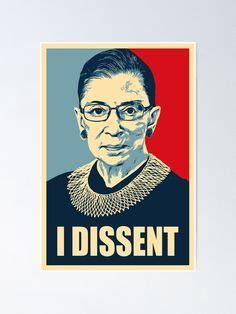




![Blackwash [working title]](/sites/default/files/styles/medium/public/56fe8ebf-7f16-4486-a251-6d85b1e906c3_4_5005_c.jpeg?itok=rIFeYRMo)

